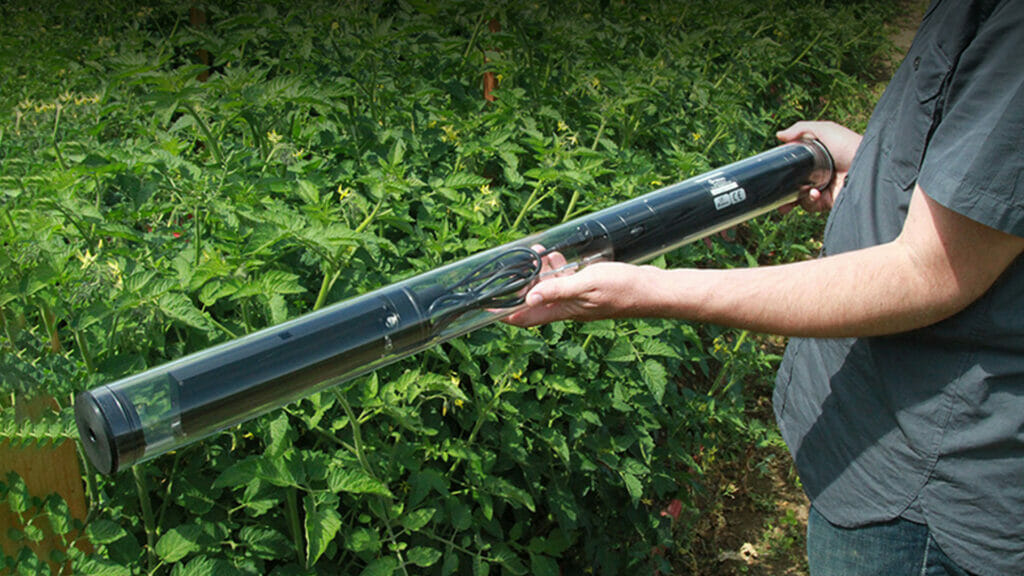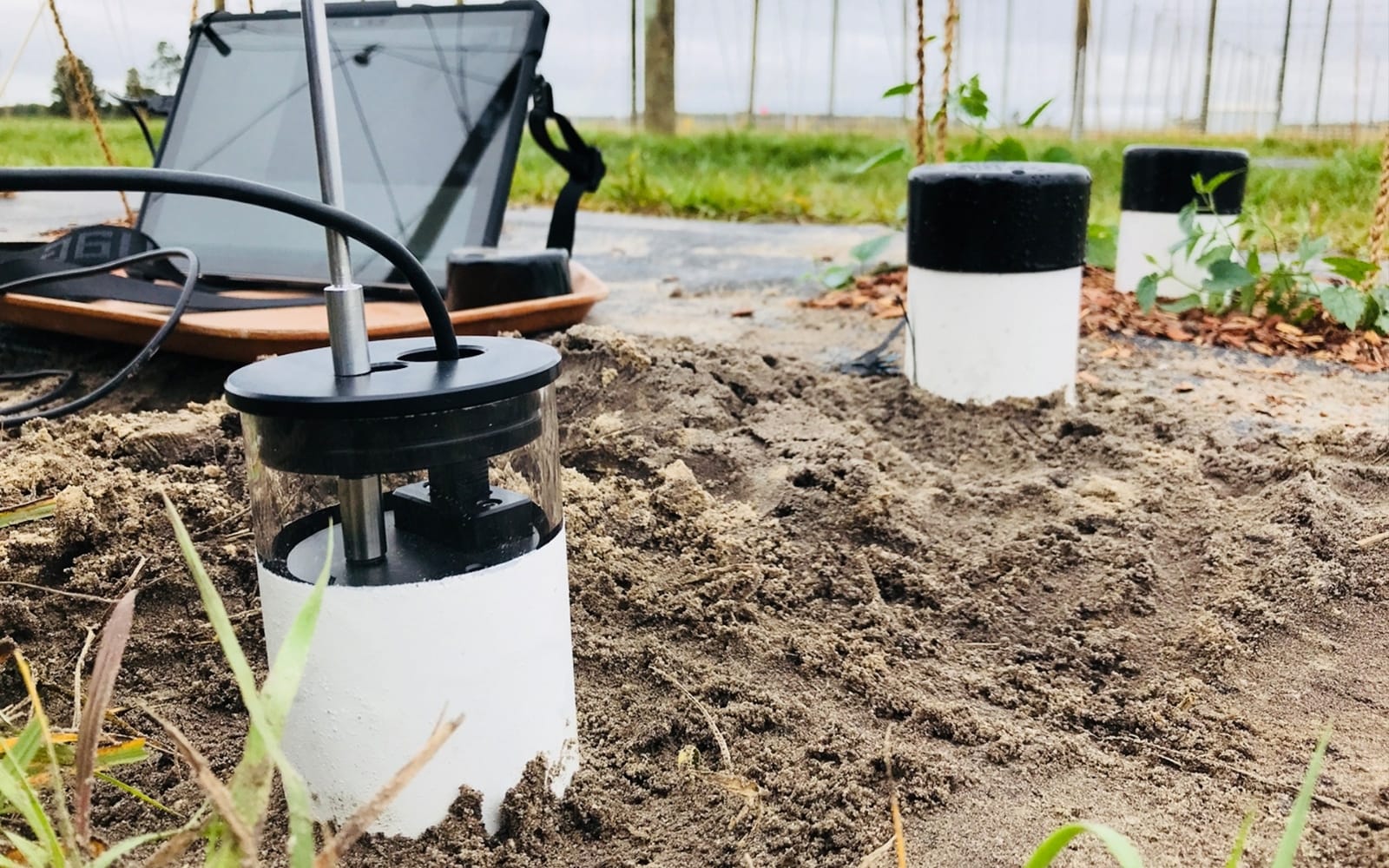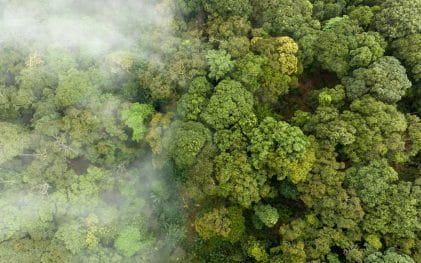November 18, 2025 at 6:55 pm | Updated November 18, 2025 at 6:55 pm | 5 min read
Studying roots in their natural environment pushes researchers to choose tools that reveal underground dynamics without disturbing the system.
The CI-600 and CI-602 both capture clear in situ root images, yet they serve different experimental setups. Root imaging supports work on growth rates, branching patterns, seasonal turnover, root longevity and soil interactions. Choosing the right device strengthens every part of that workflow.
This article explains how the CI-600 and CI-602 differ, why their design matters and which situations call for a full-size scanner or a narrow gauge imager.
Subscribe to the CID Bio-Science Weekly article series.
By submitting this form, you are consenting to receive marketing emails from: . You can revoke your consent to receive emails at any time by using the SafeUnsubscribe® link, found at the bottom of every email. Emails are serviced by Constant Contact
What the CI-600 Root Imager Offers

The CI-600 is a full-size minirhizotron scanner built for wide coverage and high clarity. The large scan window captures a broad view of the soil profile. That view matters when you want more detail on thick roots, coarse roots or diverse communities within one tube.
Its design supports repeated measurements across seasons. You insert the scanner into the transparent tube and gather a complete image around the full circumference. Each scan delivers sharp detail, which plant scientists need when tracking fine root production, turnover or decay.
The CI-600 simplifies long-term studies. You set up your minirhizotron tubes and return to them through the growing season. Because the scanner shows a larger field of view, the resulting dataset helps researchers capture root depth distribution, shifts in competition and long-term changes in structure.
Root imaging becomes easier when the instrument does not require complicated calibration. The CI-600 stays stable across repeated measurements, so users can compare images without adjusting for drift. That stability matters when building time-series datasets.
What the CI-602 Narrow Gauge Root Imager Focuses On

The CI-602 takes the core strengths of the CI-600 and adapts them for tight or specialized environments. This version uses a narrower scan head that fits into small-diameter tubes.
Many experiments rely on compact tubes because of soil constraints, container size or dense field setups. The CI-602 fits those workflows naturally.
The narrow gauge format works well in greenhouse trials, small field plots or experiments that demand high replication. Smaller tubes reduce disturbance during installation. Because the scanner fits into tight spaces, researchers can install more tubes and sample more frequently without sacrificing space.
Even with the reduced diameter, the CI-602 keeps image clarity high. The resolution supports work on fine roots, branching angles and early development stages.
If you track young seedlings, controlled soil mixes or container crops, the narrow scanner gives you the detail you need without oversizing the equipment.
Some studies focus on root placement near fertilizers, water lines or barriers. A narrow gauge tube disrupts the system less during installation, which helps keep the environment closer to its original state. That benefit often matters more than field-of-view size.
When to Choose the CI-600 Instead of the CI-602
Root imaging depends on the question you want to answer. The CI-600 handles broader scenes and deeper roots, so certain situations favor the full-size instrument.
1. Large root systems
Trees, shrubs and mature perennials often produce thick roots spread across wide soil volumes. The CI-600 captures that complexity with a broad scan window.
2. Mixed species plots
Ecology studies often include multiple species in one environment. A larger scanner helps document interactions between roots, soil fauna and soil structure.
3. Long-term carbon studies
Belowground carbon research tracks coarse root growth and decay. The CI-600 shows the full picture more effectively than a narrow tube.
4. Deep rooting investigations
Wide tubes handle deeper installations more reliably, and the CI-600 works well in those setups.
When the CI-602 Fits Better
Even though both instruments deliver high-quality root imaging, the CI-602 fits more specialized environments.
1. High-replication experiments
Greenhouse studies, growth chambers and breeding trials often require dozens or hundreds of tubes. The CI-602 fits easily into small pots or compact field grids.
2. Small containers
The narrow tube works well in pots, lysimeters and custom soil columns where a large tube would distort the system.
3. Sensitive soils
Some soils collapse or shift when you install a wide tube. The CI-602 reduces disturbance and preserves the native structure.
4. Young or fine root studies
The small scan head sits closer to developing roots. That proximity gives clearer images of branching patterns, tip growth and early root architecture.
How Scan Window Size Shapes Your Data
The largest difference between the CI-600 and CI-602 rests in their scan window size. That window affects the amount of soil captured in each image, the type of roots you can observe and the frequency of scanning.
The CI-600 covers a wider area. You see coarse roots, secondary branches and community-scale patterns. The CI-602 focuses on finer details within a tighter region. Some researchers pair both instruments to compare broad-scale and fine-scale data.
Choosing the Right Tube Installation
Root imaging only works well when the installation matches the research design. A full-size tube supports deep angles and broad coverage. A narrow tube allows dense sampling within compact layouts.
Researchers who monitor responses at multiple depths often use the CI-600. Those who want high replication per treatment often choose the CI-602. Soil stability also plays a part. Sandy or fragile soils often hold narrow tubes more securely.
Complementary Use in Larger Projects
Many long-term field sites use both scanners. The CI-600 provides seasonal views of the broad root system. The CI-602 fills the detail gap in young stands, container experiments or early root development.
Using both scanners gives you a fuller time series. You see coarse root development while tracking changes in fine roots. That pairing helps researchers understand how root systems respond to moisture changes, nutrient gradients or temperature shifts.
When root imaging supports breeding or agronomy work, combining the scanners allows both high-throughput sampling and full-scale observation. The CI-600 monitors baseline structure. The CI-602 checks detailed traits across many genotypes.
Summary Decision Guide
Here is a simple way to choose between the two instruments.
Choose the CI-600 if your experiment needs:
-
A wide scan window
-
Images of coarse and fine roots at the same time
-
Deep placement of tubes
-
Broad-scale community observation
-
Seasonal monitoring of permanent plots
Choose the CI-602 if your experiment needs:
-
Narrow tubes for high replication
-
Small containers or tight field spacing
-
Minimal soil disturbance
-
Detailed images of young or fine roots
-
Greenhouse or growth chamber compatibility
Choose both if your experiment needs:
-
Broad views plus fine detail
-
A combination of field plots and controlled environments
-
Multi-scale root imaging
-
Long-term datasets with both coarse and fine structures
Conclusion
The CI-600 and CI-602 support different approaches to root imaging. The CI-600 captures broad underground patterns that matter to field ecology, forestry and carbon research. The CI-602 fits dense experimental setups, early growth stages and environments where minimal disturbance matters.
Both tools strengthen underground observation. Choosing the one that fits your experiment improves consistency, clarity and long-term data quality.
Explore the CI-600 Root Imager and the CI-602 Narrow Gauge Root Imager on the CID Bio-Science website to find the best match for your work.
FAQ
1. Can I use the same tubes for both imagers?
Tube diameters differ, so each instrument requires its own tube type.
2. Does soil type affect which scanner works best?
Yes. Fragile or loose soils often hold narrow tubes more reliably, which favors the CI-602.
3. Can I analyze the images with third-party software?
Yes. Both scanners export standard image formats for external analysis.
Related Products
Most Popular Articles
- Transpiration in Plants: Its Importance and Applications
- Leaf Area – How & Why Measuring Leaf Area…
- How to Analyze Photosynthesis in Plants: Methods and Tools
- Plant Respiration: Its Importance and Applications
- The Forest Canopy: Structure, Roles & Measurement
- Stomatal Conductance: Functions, Measurement, and…
- Forest & Plant Canopy Analysis – Tools…
- Root Respiration: Importance and Applications
- The Importance of Leaf Area Index (LAI) in…
- Irrigating with Saline or Seawater






